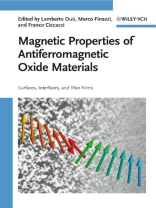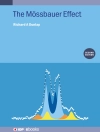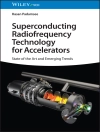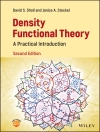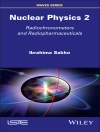This first focused treatment on a hot topic highlights fundamental aspects as well as technological applications arising from a fascinating area of condensed matter physics. The editors have excellent track records and, in light of the broadness of the topic, retain the focus on antiferromagnetic oxides.
They thus cover such topics as dichroism in x-ray absorption, non-magnetic substrates, exchange bias, ferromagnetic-antiferromagnetic interface coupling and oxide multilayers, as well as imaging using soft x-ray microscopy.
The result is a very timely monograph for solid state physicists and chemists, materials scientists, electrical engineers, physicists in industry, physical laboratory technicians, and suppliers of sensors.
Table des matières
1) Introduction
2) Growth of antiferromagnetic oxide thin films
3) Dichroism in x-ray absorption for the study of antiferromagnetic materials
4) Antiferromagnetic oxide films on non-magnetic substrates
5) Exchange bias by antiferromagnetic oxides
6) Theory of ferromagnetic-antiferromagnetic interface coupling
7) Antiferromagnetic-ferromagnetic oxide multilayers: Fe3O4-based systems as a model
8) Micromagnetic structure: Imaging antiferromagnetic domains using soft x-ray microscopy
A propos de l’auteur
After obtaining his Ph.D. degree from the Politecnico di Milano in 1987, Lamberto Duò worked as a postdoc at the Surface Science Centre of the University of Liverpool, United Kingdom, on electron spectroscopies of metal alloys (1988-1990). He was then appointed as a staff scientist to the Physics Department of the Politecnico di Milano, where he subsequently became associate professor. Professor Duò worked on electron spectroscopies of highly correlated electron systems, spin resolved electron spectroscopies of magnetic systems with low dimensionality, and scanning near-field optical microscopy of magnetic nanostructures. He is the author of over 100 publications and is involved in various international scientific collaborations.
Marco Finazzi obtained his Ph.D. degree in physics in 1994. He was then successively employed as a scientist at research institutes in Paris, Grenoble, and Trieste. From 2001 on, he has been affiliated with the Physics Department of the Politecnico di Milano, where he has been teaching experimental physics and metal and semiconductor physics. He has been an Associate Professor at the Politecnico di Milano since 2005. Professor Finazzi’s recent scientific activities focus on the study of magnetic and electronic properties of condensed matter through the application of spectroscopic techniques. He has published over 80 articles in international scientific reviews.
Franco Ciccacci was awarded his Ph.D. degree in physics from the Università di Roma in 1979. He then held various research appointments, among others at the IFF-KFA-Jülich, Germany (1980-82), at the Università della Calabria (1982-83), and at the Università di Roma Tor Vergata (1984-1987), before being appointed to a full professorship in physics at the Politecnico di Milano in 2001. Professor Ciccacci’s research activities focus on surface physics, the production and detection of spin polarized electrons, electron spectroscopy from solids, also with synchrotron radiation and spin resolution, thin film magnetism, and nanostructured materials for spintronics. He is the author of over 130 papers published in international journals.
